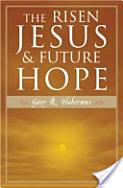Reliability of the New Testament
When it comes to the historical reliability of the New Testament, the bibliographical evidence alone is astounding. There are more extant (existing) manuscripts that bear witness to the readings of the New Testament than for any other document from antiquity. More than 24,000 partial and complete New Testament manuscripts are in existence today compared with only 643 copies of Homer's Iliad.(1) Other famous works from antiquity have even less textual evidence than Homer. For example, the writings of Plato, Pliny the Younger, Thucydides, Herodotus, and Caesar have fewer than two dozen surviving copies.(2) "In addition, to the Greek manuscripts themselves there are over 86,000 patristic (church fathers) quotations from the New Testament and several thousand lectionaries (early church-service books containing selected Scripture readings) dating from the earliest centuries of the church."(3) In fact, from these sources alone, one is able to reconstruct the entire text of the New Testament with the exception of only eleven verses from materials that date within 150 to 200 years of the life of Christ.(4)
Not only does the available manuscript evidence for the New Testament dwarf secular works, the amount of time that transpired between the events themselves and their written record is incomparable. The time span between authorship and extant copies for the New Testament is shorter than for any other document from antiquity. While scholars differ on when the New Testament documents were written, there is virtually unanimous agreement, including even the most liberal scholars that all the books of the New Testament were written by 100 A.D., approximately 70 years after Jesus death.(5) Christian apologists have referenced the fact that Luke does not discuss in the book of Acts the destruction of the temple in 70A.D. by the Romans as proof that Acts was completed in the early 60's A.D.(6)
Using the traditional dating presented by Ussher in The Scofield Reference Bible, Luke finished the book of Acts in 63 A.D. This date is significant for many reasons. First, most of Paul's epistles were written during the Acts period including the Prison Epistles which he wrote under house arrest in Rome as recorded in Acts 28. This is significant because it dates the documents by the New Testament's most prolific writer within thirty years of the life of Christ. Second, according to Acts 1:1, the book of Acts is the second portion of a two part history addressed to Theophilus. By comparing scripture with scripture, it is clear that the first edition of this treatise addressed to Theophilus was the book of Luke. Luke 1:3 records the following, "It seemed good to me also, having had perfect understanding of all things from the very first, to write unto thee in order, most excellent Theophilus." If Luke finished the book of Acts in 63 A.D. that means that the gospel of Luke had to have been written first, thereby conclusively proving that the gospel accounts themselves were written within 30 years of the death of Christ. Based upon the authority of Colossians 1:25, this author believes that when Paul penned his last epistle, II Timothy, in 66 A.D. that the cannon of the New Testament was complete.(7)
Once again, no other religious document compares to the New Testament in terms of the space of time between when the events occurred and when they were first written down. For example, "the teachings of Buddha were not recorded until five hundred years after his death."(8) Likewise, when one compares the amount of time between the events recorded and the earliest available textual witnesses, the New Testament is infinitely more historically reliable than any other work of antiquity. Consider that Homer's Iliad was originally written in 900 B.C. while the earliest surviving copy dates around 400 B.C., resulting in a time span of 500 years. On the other hand, the New Testament which was written between 40-90 A.D. depending on whose dating you use, has early textual witnesses that date around 125 A.D., a time span of less than 100 years.(9) In The New Evidence That Demands a Verdict, Josh McDowell documents the same reality for eight other leading ancient works. Dan Story offers the following summation of the situation, "In the case of the New Testament, unlike other ancient works, whether secular or religious, not enough time elapsed between when Jesus spoke and when His words were recorded to allow for misrepresentation or the development of legendary material about him."(10) The central point here is that despite the attempts of heretics in the 1st century to corrupt the word of God (II Corinthians 2:17), when compared with other classical works, the Bible stands alone in terms of the time gap between when the events recorded occurred and their manuscript witnesses.
The fact that the New Testament was written by eyewitness to the events recorded stands out as a third proof for the historical reliability of the New Testament. In short, the New Testament possesses primary source value. "The New Testament Gospels were written either by eyewitnesses to the events in Christ's life (Matthew and John) or by men who knew and interviewed eyewitnesses (Mark and Luke)."(11) Paul, having seen the risen and glorified Christ, along with the other authors of the New Testament, was careful to note this first-hand, eyewitness testimony as verification of authenticity. Consider the following examples:
- Luke 1:1-3--
Forasmuch as many have taken in hand to set forth in order a declaration of those things which are most surely believed among us, 2) Even as they delivered them unto us, which from the beginning were eyewitnesses, and ministers of the word; 3) It seemed good to me also, having had perfect understanding of all things from the very first, to write unto thee in order, most excellent Theophilus, - John 19:35--
And he that saw it bare record, and his record is true: and he knoweth that he saith true, that ye might believe. - John 20:30-31--
And many other signs truly did Jesus in the presence of his disciples, which are not written in this book: 31) But these are written, that ye might believe that Jesus is the Christ, the Son of God; and that believing ye might have life through his name. - Acts 10:39-42--
And we are witnesses of all things which he did both in the land of the Jews, and in Jerusalem; whom they slew and hanged on a tree: 40) Him God raised up the third day, and shewed him openly; 41) Not to all the people, but unto witnesses chosen before of God, even to us, who did eat and drink with him after he rose from the dead. 42) Not to all the people, but unto witnesses chosen before of God, even to us, who did eat and drink with him after he rose from the dead. - I Corinthians 15:6-8--
After that, he was seen of above five hundred brethren at once; of whom the greater part remain unto this present, but some are fallen asleep. 7) After that, he was seen of James; then of all the apostles. 8) And last of all he was seen of me also, as of one born out of due time. - I Peter 5:1--
The elders which are among you I exhort, who am also an elder, and a witness of the sufferings of Christ, and also a partaker of the glory that shall be revealed: - II Peter 1:16-- For we have not followed cunningly devised fables, when we made known unto you the power and coming of our Lord Jesus Christ, but were eyewitnesses of his majesty.
- I John 1:1-3--
That which was from the beginning, which we have heard, which we have seen with our eyes, which we have looked upon, and our hands have handled, of the Word of life; 2) For the life was manifested, and we have seen it, and bear witness, and shew unto you that eternal life, which was with the Father, and was manifested unto us;) 3) That which we have seen and heard declare we unto you, that ye also may have fellowship with us: and truly our fellowship is with the Father, and with his Son Jesus Christ.
In addition, the New Testament writers appealed not only to their own observations but also to those of their readers and listeners even when the witnesses were hostile (Acts 2:22, 26:24-28).(12)
Paul and the other New Testament writers appealed to the testimony of eyewitnesses because people who knew Jesus and had observed his miracles were still alive when the New Testament was being written. This allowed critics and skeptics to openly refute the truth claims of the Biblical writers. The fact that not a single piece of historical information surfaced during the first century to refute the miraculous birth, ministry, death, and resurrection of Jesus Christ is proof that the New Testament documents are historically reliable.13)
Have you ever noticed how no one questions whether Plato, Caesar, or Homer have been properly understood? Yet the Bible is criticized by academia as being historically inaccurate and unreliable. All of this demonstrates the bias of unsaved scholarship against the Bible and its central message. Simply stated, the Bible is the most trustworthy historical document from antiquity. "If the Bible is thrown out as unreliable and the critics' standards remain constant when evaluating the truth-claims of other ancient books, then virtually all other books from antiquity must be discarded as unreliable."(14) In conclusion, "there is more evidence for the reliability of the text of the New Testament as an accurate reflection of what was initially written than there is for any ten pieces of classical literature put together. . . [the Bible is] also in better textual shape than the thirty-seven plays of William Shakespeare written in the seventeenth century, after the invention of printing."(15)
Endnotes:
- Josh McDowell. The New Evidence That Demands a Verdict. (Nashville, TN: Thomas Nelson, 1999), 34.
- Ibid., 38.
- Dan Story. Defending Your Faith: How to Answer the Though Questions. (Nashville, TN: Thomas Nelson, 1992), 38.
- Ibid., 38-39.
- Norman Geisler and Frank Turek. I Don't Have Enough Faith to be an Atheist. (Wheaton, IL: Crossway Books, 2004), 235.
- Ibid., 237-239.
- Colossians 1:25—"Whereof I am made a minister, according to the dispensation of God which is given to me for you, to fulfil the word of God." The word "fulfil" in this verse means to complete. Given the immediate context, Paul is saying that when the revelation of the mystery concerning the Dispensation of Grace is finished, the word of God will also be fulfilled or complete. Therefore, according to the witness of God the Holy Spirit, Paul's writing complete the New Testament cannon not John's.
- Story. Defending Your Faith: How to Answer the Though Questions. 40.
- McDowell. The New Evidence That Demands a Verdict. 38.
- Story. Defending Your Faith: How to Answer the Though Questions. 40-41.
- Ibid., 43.
- Ibid., 43.
- Ibid., 44.
- Ibid., 47.
- Josh McDowell. A Ready Defense. (San Bernadino, CA: Here's Life, 1990), 24.


























2 comments:
I agree that Paul's writing completes the New Testament Cannon and therefore the entire Word of God is now complete. You have successfully shown that God has preserved his Word, intact, for us today. Those who choose not to believe truly will have no excuse.
Thank you Bryan.
You've got to be kidding if you think anyone is going to read so much white text (in bold yet) on a black background. He who wants to be read puts clear standard black type (not bold) on a white or light colored background.
Post a Comment